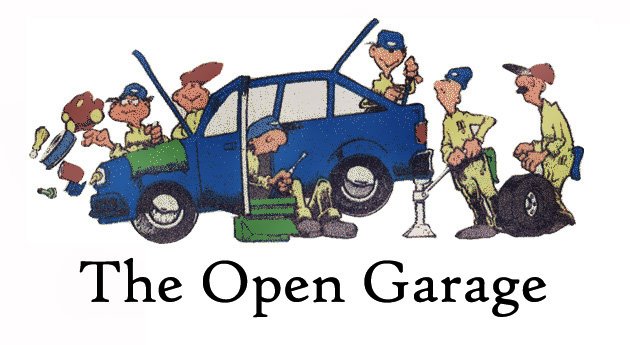Auto detailing is the practice of performing an extremely thorough cleaning, polishing and waxing of an automobile, both inside and out, to produce a show-quality level of detail. It can be practiced for personal satisfaction, and it is also performed to prepare a car for a Concours d'Elegance (often shortened to just Concours), a car show that features the appearance of cars. Elements of exterior detailing include claying, polishing, and waxing. Interior detailing involves the cleaning of the interior of a vehicle using vacuums, liquid cleaners, and brushes. Engine detailing involves cleaning the engine bay area of dirt and grease by using degreasers and all-purpose cleaners.
What is Detailing?
While there are no specific guidelines for what actually makes up a 'detail,' it is typically considered more extensive than washing and drying a car, and will often involve many steps. Main goals are typically beautification and protection, but can also touch other areas such as minor paint repair and surface restoration, as well as thoroughly cleaning areas which are normally ignored such as the engine and underchassis, wheels, tires, and trim.
The steps of a basic exterior detail of the paint surface consist of, in this order, wash, dry, clay bar, polish, glaze, sealant, wax. Application of a glaze is optional, as is application of both a sealant and wax.
A variety of shampoos, cleaners, degreasers, protectants, lubricants, polishes, clay bars, and waxes have developed over time to suit various demands of consumers and professionals.
Clay bar
Clay is a mixture of clay base and various mild abrasives that is used to remove paint contamination. Spray wax, window cleaner or water can work as a clay lubricant. Road grime, tar, bugs, rust, tree sap and even paint overspray can be removed with a clay bar.Claying does not remove the clear coat of the paint but can cause marring or dullness if used incorrectly. It takes a few passes of clay to feel the difference on the surface of the paint. Claying does not replace polishing. It is simply a process that should be used before polishing compound is used. Claying should be used once or twice a year depending on the year of the car or truck.
Purpose of Polishing
The purpose of polishing is to remove oxidation, swirls, scratches, water deposits, and other imperfections from the paint. In contrast to a clay bar, which removes contamination, polishes remove surface imperfections. Polishing generally is the single most time consuming step in an exterior detail.
Polishes typically are classified in two categories, a chemical polish or abrasive polish. A chemical polish, sometimes called a prewax cleaner, cleans the surface and removes oxidation. An abrasive polish removes a small portion of the clearcoat or the base paint itself on single stage paint. Abrasive polishes are classified based on how abrasive they are. The abrasive polish with the most abrasion typically is called a Rubbing Compound. A Rubbing Compound will remove heavier scratches and swirls as well as oxidation. It can be compared to a very fine sandpaper. The abrasive polish with the least abrasion typically is called a finishing polish. A finishing polish is used to remove light oxidation and fine scratches and swirls. It is also used to remove the haze resulting from application of a more abrasive polish. Abrasive polishes work best when applied with a machine rotary buffer or machine random orbital buffer. Different pads are used on the buffer depending on the abrasion level of the polish.
An "All in One" product typically combines a chemical polish and sealant to be applied in one step. A "buff and wax" contains a high level of cleaner and U.V. protectant or carnuba, producing a polish and a protect effect. Unlike a chemical polish or abrasive polish, a glaze does not clean or abrade the paint. A glaze typically contains oils and kaolin to fill and mask minor imperfections remaining after polishing, and to enhance the brilliance of the finish. If a glaze is applied, it is used after use of a chemical polish or abrasive polish or All in One product but before application of a sealant or wax.
Purpose of Sealants and Waxing
Synthetic sealants are polymer based and provide more durability than even the best carnauba wax. They are liquid in form and apply very much like a liquid wax. It is suggested that most sealants cure for 12 to 24 hours before layering additional coats on the paint or applying wax over the sealant. Curing involves the cross-linking of polymer strands. When cross-linking is completed, the product has "cured." Some sealants contain an accelerator, or are sold with a separate accelerator that is mixed with the sealant before use, which speeds up the cross-linking (curing) process. For best results, the surface of the vehicle should be properly prepared for a sealant, which involves cleaning and polishing the paint prior to application. Applying a sealant over a wax or surface contamination may inhibit the bonding of the product to the paint. Once you top a sealant with a wax you will not be able to apply additional layers of the sealant without first cleaning the paint and removing all the wax.
Waxing further enhances the gloss and depth of the paint, and provides even more but shorter lasting protection. Wax comes in many forms such as cream, paste, and liquid. Most waxes contain carnauba which contains a high amount of fatty acids. This fatty acid creates a solid layer between the paint and the outside world which protects it, and gives it a glossy finish. Synthetic waxes commonly mix low amounts of cleaners with high amounts of U.V. inhibitors to create the same protective layer that carnauba does. Synthetic wax creates a high gloss while carnauba waxes give a warm and wet looking finish.
Source: Wikipedia
